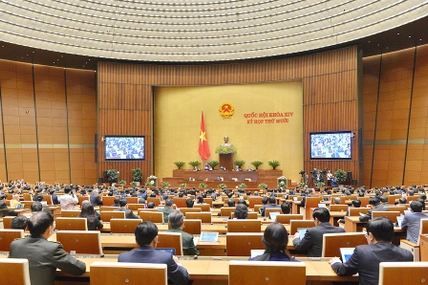Special regulations of the Land Law 2024 are applied from April 01, 2024 and this effectiveness is earlier than the general effectiveness of this Law.
The State encourages the implementation of activities related to land reclamation from the sea
The Article 190 on Land reclamation from the sea is prescribed at the first time at the Land Law No. 31/2024/QH15.
Accordingly, the State encourages organizations and individuals to use their capital, technology, and techniques to reclaim land from the sea; and adopts support and incentive policies for investors engaging in land reclamation from the sea as prescribed by law.
Land reclamation from the sea must adhere to the following principles:
- Ensuring national defense, security, sovereignty, sovereign rights, jurisdiction rights, national interests at sea; accordance with other relevant law regulations and international conventions of which the Socialist Republic of Vietnam is a member;
- Basing on comprehensive assessments of economic, social, and environmental factors, ensuring sustainable development, biodiversity, natural elements, impacts of natural disasters, climate change, and rising sea levels;
- Conforming to provincial development master plans or district-level land use master plans or construction master plans or urban development master plans;
- Efficient exploitation and use of marine resources; ensuring the harmonization of interests between organizations and individuals carrying out land reclamation from the sea, and other relevant organizations and individuals; ensuring people's and community's access to the sea;
Land reclamation from the sea must be implemented under investment projects or project items in accordance with law regulations
Land reclamation from the sea that involves one of the following areas may only be conducted upon approval and investment decision by the National Assembly and the Prime Minister:
- Areas designated for the protection of historical-cultural relics and famous landscapes recognized in accordance with law regulations on cultural heritages;
- Natural heritages as prescribed by the law regulations on environmental protection;
- National parks, nature reserves, species conservation areas, landscape protection areas, and important wetland sites as declared under law regulations on biodiversity and forestry;
- Marine reserves, aquatic resource protection areas, fishing ports, anchorage areas for storm avoidance for fishing vessels as prescribed by law regulations on fishery;
- Seaport areas, waters in front of port bridges, turning areas for ships, anchorage areas, transfer areas, storm avoidance areas, pepper inspection areas, maritime traffic lanes, water areas for constructing other auxiliary facilities as prescribed by maritime law regulations;
- River mouths and areas planned for national defense and security purposes.

Amending a number or regulations on using land of forest
Article 248, Land Law 2024 amends and supplements a number of Articles of the Law on Amendments and supplements to a number of articles of Law No. 16/2017/QH14 on Forestry, of which a number of articles were amended and supplemented under Law No. 16/2023/QH15
Accordingly, the forest allocation, forest lease, conversion of forest land use to other purposes and it conform to the national forestry master plans provincial development master plans or district-level land use master plans.
The land use purposes of natural forest land shall not be changed to other purposes, except for the following projects: projects of national importance; projects serving national defense and security; and other necessary projects meeting the criteria prescribed by the Government.
The plans for forest allocation, forest lease, and conversion of forest land use to other purposes of the district-level People's Committees approved by the provincial-level People's Committees or the district-level annual land use plans approved by the competent authorities.
The conditions for changing the land use purpose must conform to the national forestry master plans provincial development master plans or district-level land use master plans.









